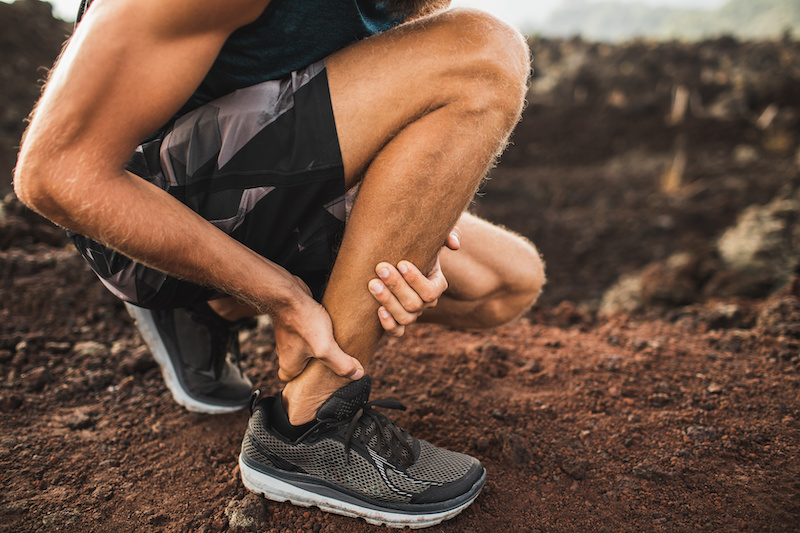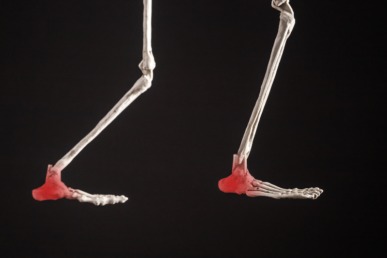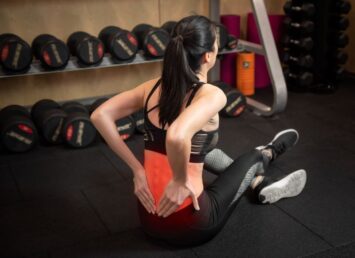Targeted Exercises for Strength & Balance
When trying to reach peak physical fitness and prevent sports-related injuries, an often overlooked area of concern is the ankle.
In fact, unless you’re actually experiencing pain, it’s easy to forget what a huge role the muscles supporting the ankles play in practically all physical activity.
As one of the body’s most major weight-bearing structures, the musculature of the ankle affects the ability to perform activities like running, jumping, and balancing, as well as the likelihood of developing a variety of lower leg injuries, such as ankle sprains and strains, shin splints, Achilles heel tendonitis, and associated discomfort in the calf and foot. Having strong ankles can also reduce the likelihood of painful rolling of the joint from falls, slips, and trips, and improper landings, that, once they occur, are more likely to happen again.
The multiple muscles that cross the ankle work together (or not) to enhance mobility as well as stability, so it’s important to regularly challenge them for strength and balance.
While often the appropriate ankle exercise depends on the athlete’s preferred activity and current pain situation, there are many helpful exercises you can easily add to your routine. Aim to do three sets of 10 reps each, even if you have to work up to that.
Standing Heel Raises
This one is as easy as it sounds. Stand with your feet hip-width distance apart in front of a counter, banister, or other stabilizing surface and slowly raise yourself onto the balls of your feet and back down. This should be a controlled movement to fully lengthen and contract the muscles of the ankles and calves.
Single-Leg Balance
Start by standing on one foot on a hard, stable surface for 30 seconds at a time. If that proves to be too easy, move to a carpeted area or another soft surface to increase the challenge, eventually trying to stand one-footed on a balance board, Bosu ball, or another less stable surface. Additional challenges include tossing and catching a ball in the air while balancing one-footed, or tossing a ball to and from a workout partner while in the same position. It is common to have better balance on one foot than the other. If this is the case with you, work the less stable foot for an additional set.
Squat Jumps
This one adds some intensity but is great for strengthening not only the ankles but the hamstrings, quads, and glutes as well. Standing with your feet hip-width apart, slowly lower to a full squat, and then jump straight up with fully extended legs and pointed toes before landing again in a squat position. This can also be done on a balance board or ball without actually leaving the ground. Just push up with force from a full squat to a standing position while working to maintain balance.
Rehabbing the Ankle
If you already have ankle pain, it’s important to begin with non-weight-bearing exercises that improve range of motion and mobility. These can be done while lying supine on the floor or on a mat.
Ankle Rotations
With the resting leg bent and the foot flat on the floor, extend the working leg toward the ceiling. Slowly rotate the foot/ankle in a clockwise position 10 times, followed by a counter-clockwise rotation the same number of times. Switch legs and repeat.
Dorsiflexion/Plantar flexion
With the legs stretched out in front of you, point the toes with intention, holding the position for two-five seconds before relaxing again.
Follow that by a series of foot flexes, pulling the toes back toward the nose and holding two-five seconds before relaxing.
Ankle Inversion/Eversion
Lying on your back with your legs straight and hip-distance apart, engage the ankles muscles by rotating the ankles/feet inwards toward each other. Hold this inverted position for two-five seconds before relaxing.
In the same position, evert your ankles by turning them away from each other, holding the outward turned position for several seconds before relaxing.
While ankle pain is common with many athletes, if you have constant or recurring ankle pain there may be something bigger going on. Improper body alignment, myofascial dysfunction near the ankle muscles, or undiagnosed injuries should be addressed before starting or continuing a targeted exercise program. If you are experiencing ankle pain in spite of regular strengthening and balance work, contact Dynamic Sports Medicine for evaluation.





